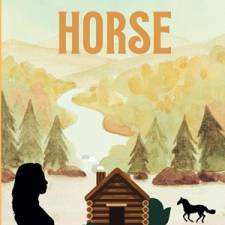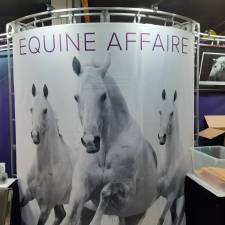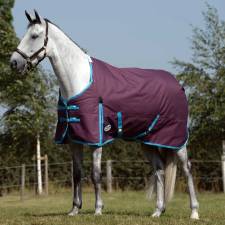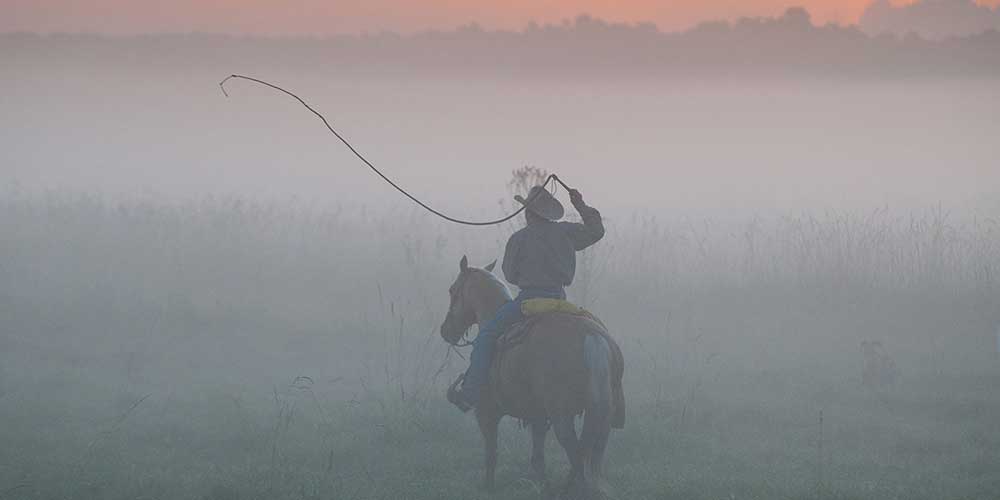
Photographer: Carlton Ward, Jr. | Writer: Derek Herscovici
To a Florida native, being called a “Cracker” is a compliment.
It recalls the grit and tenacity of laboring cowboys who came generations before them, from which the nickname, Florida Cracker, is derived. Many associate the cowboy with the Wild West, but few know that these bullwhip-toting ancestors shaped the landscape, history and economy that make Florida what it is today – and we’re proud to share the story of the term’s roots.
Spain’s attempts to colonize the interior of Florida were abandoned by the early 1700s. Spanish colonists retreated to the fortress towns of St. Augustine and Pensacola or departed for their Caribbean holdings in Cuba and Hispaniola (the island now made up of the Dominican Republic and Haiti), leaving behind massive herds of Andalusian cattle, an ancestor of today’s modern Texas longhorn.
Prized for the hardiness and resistance to parasites the breed had developed living in Florida, these cattle were turned loose or escaped their enclosures, multiplying and spreading across North America in record numbers. The cattle drove Florida’s economy for much of the 19th century and helped create today’s state economy. Without these cattle, the cracker cowboy, the most mythic of the Florida frontiersmen, would not have existed. Their descendants, the cowboys who moved out west, might not have either.
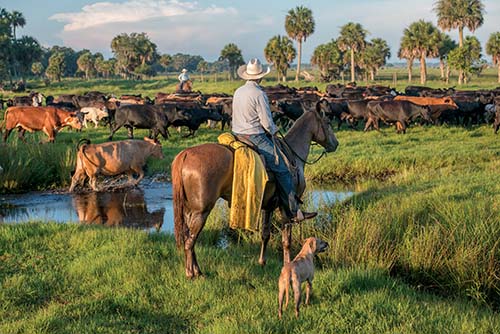
Battles fought between indigenous Native Americans and the Spanish and English settlers in Florida were fueled to no small degree by the various cattle rustlers on both sides who sought to control the large, wild herds of the interior and the land they grazed on.
Ahaya, “the Cowkeeper” and the first chief of the Alachua band of the Seminole tribe, took territorial control of modern-day Paynes Prairie and an abandoned Spanish cattle ranch in the early 1700s, quickly amassing enough wild cows to earn his namesake. The village he and his people established before his death in 1784, Cuscowilla, later became the first established American town in the Florida territory under its current name, Micanopy. Rather than import or drive more cattle into Florida, the two sides instead warred over the existing population until the settlers were able to displace the natives.
The second generation to settle in the Florida territory after the Spanish were pioneers who traveled south through the state in the period between the American Revolution and the Civil War.
Control of Florida was still disputed by Spain and England, so settlers in the state lived outside the political control of both nations. Cattle rustlers, charged with rounding up the loose cattle in Central Florida, used long, braided leather bullwhips to bring cattle out from the underdeveloped forest brush.
The men would flail the whips with so much force that the tips would actually break the sound barrier, creating a cracking sound — actually a small sonic boom. Thus, a name for these Florida cowboys was born. Stories quickly spread about the rustlers’ individual whip-cracking sounds that allowed them to identify each other from far away.
The cracker cowboys rode short horses called “cracker ponies” across the Florida Cracker Trail from Fort Pierce to Bradenton. This trail across Central Florida was blazed out of necessity more than anything else. Moist land surrounding the Kissimmee River prevented travel to the north, while the sizable Lake Okeechobee and the Everglades swamps meant the crackers could not cross to the south either.
Every year the crackers would convene on the more populous east coast and stock up for the long 120-mile journey across the trail to the Gulf of Mexico, where the cattle would be shipped to Cuba. To maximize profits, they had to deliver the cattle to shipping ports during peak market season in late July and August, when the weather was at its worst.
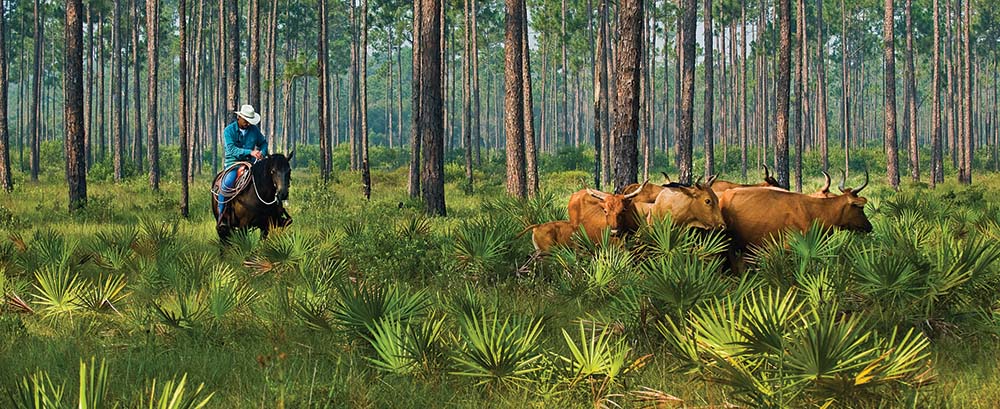
Florida’s unpredictable weather, from never-ending downpours to oppressive heat, was just one challenge the cracker cowboys faced on the trail. They also had to take care to avoid dangerous panthers, bears and wolves and hostile native tribes with nothing but small packs of herd dogs for protection.
Upon arriving safely in Fort Pierce, the crackers often stopped at P.P. Cobb’s General Store (100 Ave. A, Fort Pierce). The oldest commercial establishment in St. Lucie County, the store opened in 1882 as a trading post between Seminole tribes, planters, crackers and sailors. You can still see the giant blackboard ledger behind the counter where crackers’ names were written when they bought supplies on credit, debts occasionally repaid with Spanish gold after the long drive.

During the Civil War, cracker-supplied cattle were the Confederate Army’s chief source of meat, leather and hides, particularly after Union ships blockaded southern ports. Forced to drive the animals by land into Georgia, the “Cow Cavalry” faced harsh conditions and the occasional skirmish with Union forces along the way, prompting some to turn sides and sell their cattle to the Union-controlled port of Fort Myers.
When the war was over, Judge Ziba King, a former Confederate officer, became the greatest “cattle baron” in Florida history. He owned more than 50,000 cows – a tenth of Florida’s total cattle population – worth a half million dollars at the time of his death in 1901 (over $13 million in 2016 dollars).
While King’s success could be linked to the cattle trade with Spanish Cuba, much of the everyday work was carried out by journeymen cattle rustlers – none more famous than King’s prized rancher, Morgan Bonaparte “Bone” Mizell. Born in present-day DeSoto County, Mizell was known far and wide as much for his drinking and mischief as his knowledge of cattle brands. Rumor had it he could recognize hundreds of different brands.
As barbed-wire cattle farms started to offer more consistent beef, the roaming Florida cracker personified by Mizell faded into history, but their stories and the culture they embodied can still be felt here in Central Florida. In 2000, the White House Millennium Council selected the Florida Cracker Trail as a “Millennium Trail,” recognizing both its historical and cultural importance to the state and the nation.
The trail’s western terminus is now Manatee Village Historical Park. Road trippers can still visit the Desert Inn and Restaurant in Yeehaw Junction, which was built in 1885 as a saloon for weary crackers and travelers, with a brothel on the second floor.
After extensive renovations, the Desert Inn now offers classic Florida country dishes and lodging. For a true taste of the cracker life, nothing beats the Great Florida Cattle Drive Reunion, an annual convention and cattle herding expedition from January 27-29, 2017 at the Florida Agricultural Museum in Palm Coast.
This aritcle originally appeared on Tampa Magazines and is published here with permission.
Find more interesting articles in our section on Recreation & Lifestyle and Western Riding.








